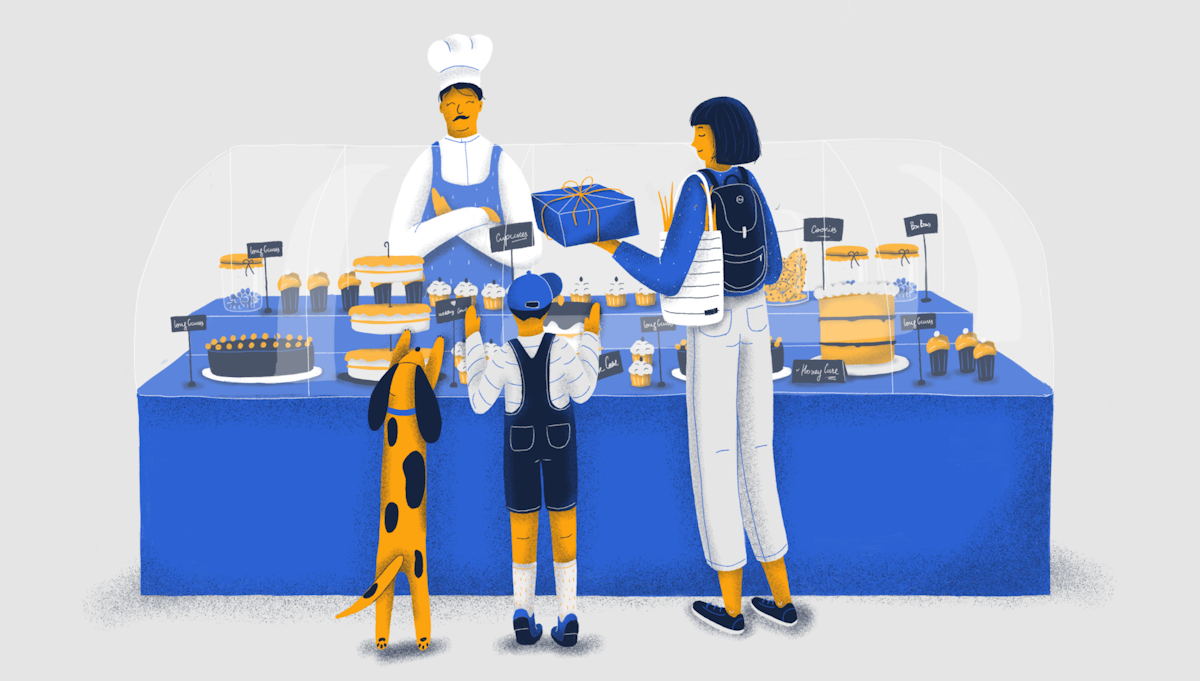 Photo by Adam Fard UX Studio
Photo by Adam Fard UX Studio
Originally Posted On: Stickiness: A Path to Engaging Digital Experiences (adamfard.com)
We’re living in the age of dwindling attention spans. This relatively recent development pushes businesses to create engaging products to ensure a higher retention rate.
In contrast, a little over ten years ago, the central success metric was the number of downloads. Today, however, installations mean nothing if users abandon or delete the app hours after trying it.
To measure and design products better, UX designers have created a new metric called stickiness — which is the topic of today’s article. It’s a straightforward yet clever way to create captivating and meaningful experiences.
Let’s dive right in, shall we?
About stickiness
While it’s a fairly simple metric, stickiness is by no means universal. Every product needs a tailored and specific approach to it. Furthermore, for some, there’s no good reason to measure it in the first place.
Let’s take a look at its formula:
Stickiness = (Daily Active Users ÷ Monthly Active Users) × 100
Depending on the nature of the services you provide, the formula can be adjusted to extract more meaningful insight.
Products like Instagram typically measure their daily active users because it’s a product that people use very often. Other products that imply less regular use should instead focus on their weekly or monthly activity.
Some apps don’t even need to measure stickiness. For instance, if a product’s purpose is to notify its users about life events, there aren’t many benefits to making it a high-level metric.
Provide value right away
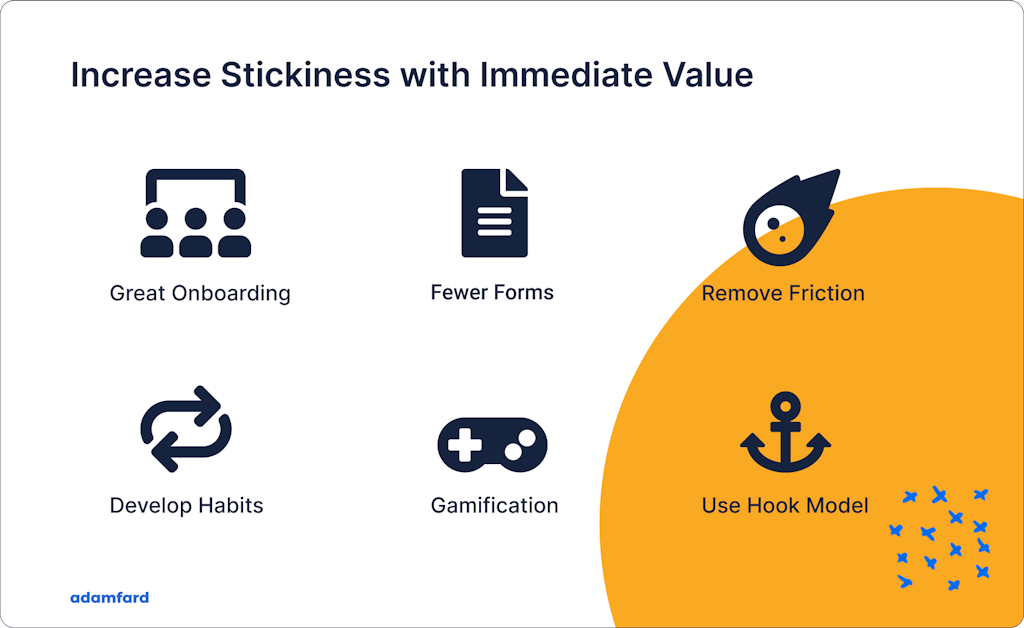
A quick way to increase stickiness is by facilitating access to the product’s value. Here are a few ways this can be achieved:
Great onboarding
An optimized onboarding process is an excellent way to help the user learn how to use the product quicker and more efficiently. A problem associated with low retention is a steep learning curve, an issue that onboarding helps mitigate.
It’s important to underline that the process of educating your customers about your offering should be short and informative. A dull, long-winded onboarding process will only defeat the purpose of increasing user engagement.
Fewer forms
Using too many forms during registration will create a hurdle that will prevent users from feeling excited about your product. This way, you’ll allow them nearly instant access to the value behind your app or service.
Remove friction
When an experience’s cognitive load is significant, this can harm user engagement. By reducing the cognitive burden, you’ll create a stickier environment that is naturally more inviting to your customers.
Develop habits
Habit formation is a surefire way to increase retention. Before we explore this topic, let’s zoom in on what a “habit” is.
Habits are automatic behaviors that are routinely performed by a person. They have three central components: a cue, an action, and a reward. When a person encounters a cue, they are automatically triggered to act in a certain way. This is where the reward comes into play.
With digital products, a cue is a need or desire. To create sticky experiences, we must reward our users when they act by using our product when they encounter a relevant cue.
Here are a few ways you can approach this:
Gamification
By inserting gameplay elements in non-gaming settings, we can help people develop lasting habits.
Meditation apps give their users badges for long streaks. Productivity apps often have leaderboards, where they display their most active participants. These gamification techniques reward the most active users and stimulate others to do the same.
Trigger → Action → Reward → Investment
This is a depiction of Nir Eyal’s “Hook Model” — a framework for creating habit-forming products.
A “trigger” can be both external (an email, post on social media, etc.) and internal (need for social acceptance, self-realization, etc.).
An “action” is what we do to acquire a reward. To stimulate users to act, they must find it simple and be psychologically motivated to do so.
“Rewards” must be variable. Here, variability is essential because unpredictable experiences tend to increase our dopamine levels.
“Investments” refer to the time, effort, and money a person spends seeking rewards by reacting to triggers with actions. These investments make future rewards even more satisfying.
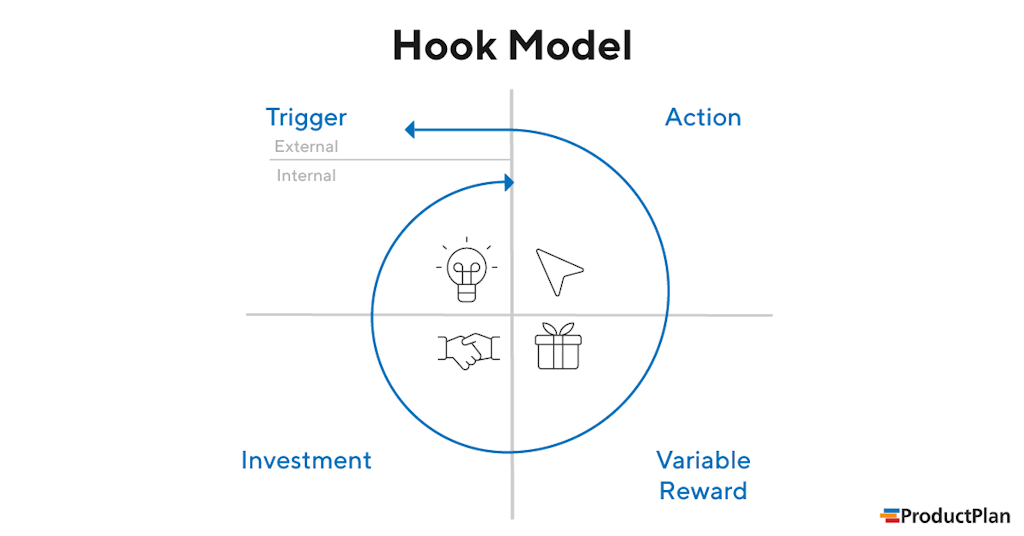 Source: https://www.productplan.com/glossary/hook-model/
Source: https://www.productplan.com/glossary/hook-model/
Gather data
In order to increase stickiness, it’s essential to conduct proper research and understand the features that people find engaging or otherwise. These are valuable indicators, which can guide you towards creating a stickier product.
Qualitative research
This category of research is among the most powerful tools to understand what lacks and what works. Qualitative studies are useful because they allow you to ask users about their pain points, preferences, and desires.
Quantitative research
Quantitative studies are a great way to validate your assumptions by taking a closer look at the numbers. It’s a great way to compliment your qualitative research by testing solutions that emerged from it.
A/B testing
Another great way to validate hypotheses is to test two different versions of certain screens. This enables teams to quickly test and iterate improved flows, components, etc.
Out-of-app communication
To stimulate engagement, we need to also look beyond the product. There is a variety of out-of-app communication channels that can improve a user’s experience.
Push notifications
A well-timed notification can do wonders. Personalization can push stickiness even further. You can engage your user by sending them notifications that feature the actions you want them to take — book a cab with a discount, meditate, track their workout, etc.
 Source: https://usabilitygeek.com/push-notifications-nifty-or-nuisance/
Source: https://usabilitygeek.com/push-notifications-nifty-or-nuisance/
Emails
Dynamic emails with powerful subject lines that tap into storytelling can be both useful and entertaining. Here, personalization is critical as well. According to a study conducted by Campaign Monitor, tailored campaigns can generate up to a 760% increase in email revenue.
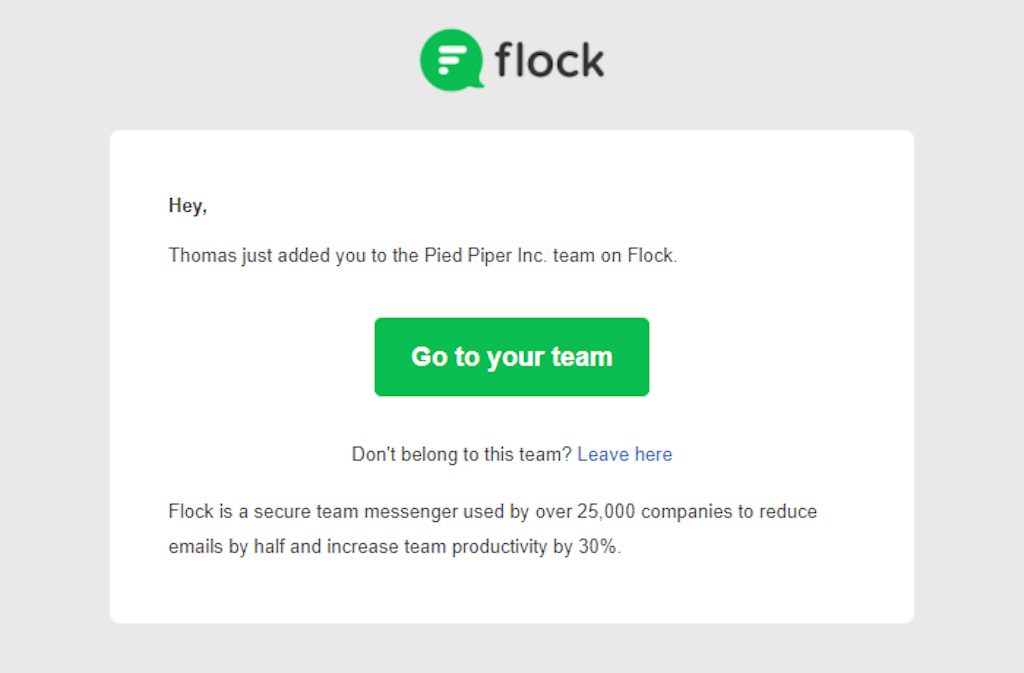 Source: https://mailbakery.com/blog/best-email-marketing-campaign-examples/
Source: https://mailbakery.com/blog/best-email-marketing-campaign-examples/
Educational materials
A rich and informative knowledge base can be quite helpful when it comes to tackling a product’s learning curve. It’s imperative that users access quick solutions to the questions that arise while using your app.
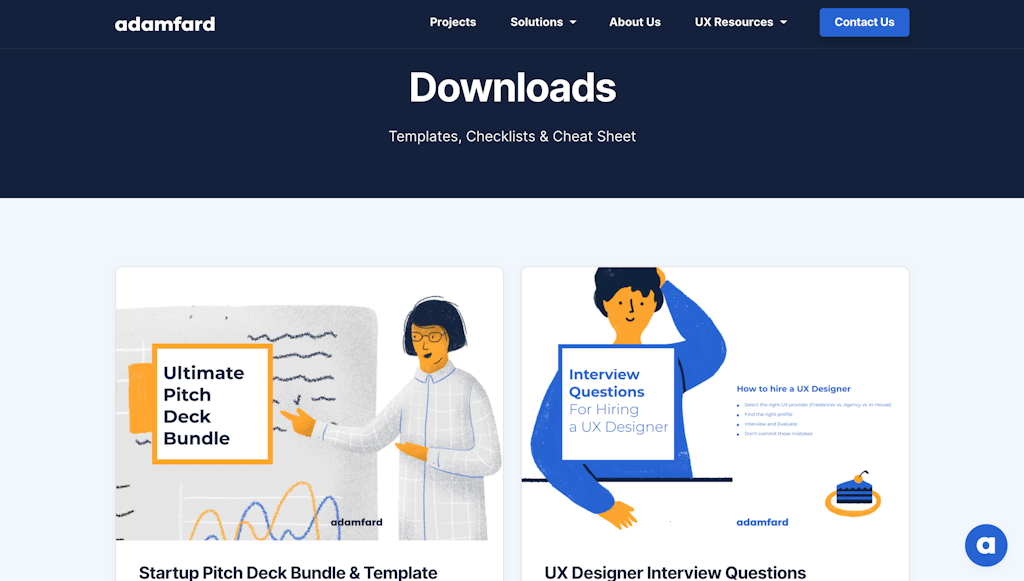
Best practices
Best practices and use cases are an excellent way to showcase how your product has improved other people’s lives. It’s a more intricate and pragmatic form of onboarding.
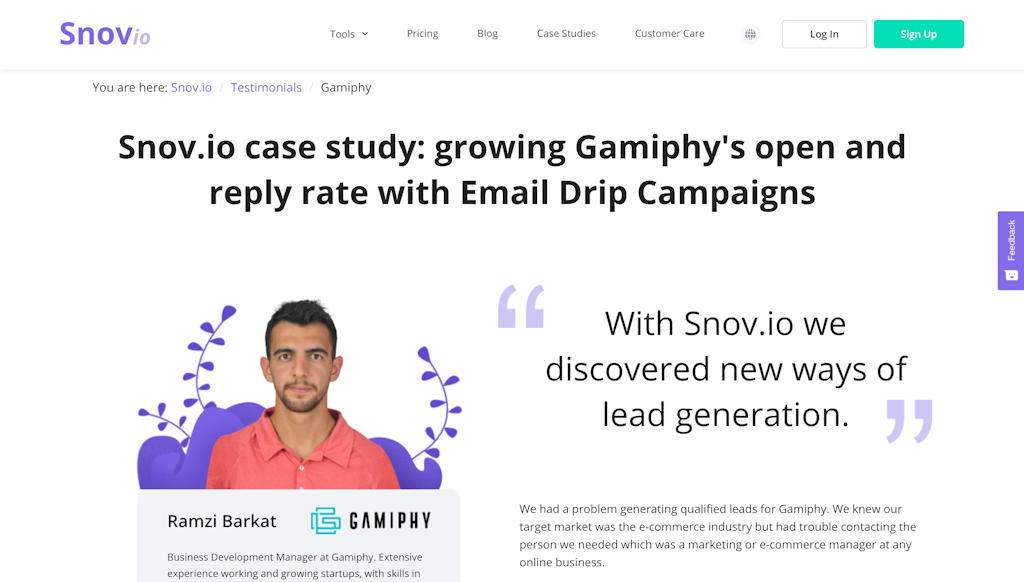 Screenshot taken from: https://snov.io/snovio-gamiphy-case-study?lang=en
Screenshot taken from: https://snov.io/snovio-gamiphy-case-study?lang=en
Any content that provides value
Curated content delivered to users’ feeds and email inboxes is a great way to remind them about your app or service. Furthermore, valuable content can strengthen the association between your product and its usefulness.
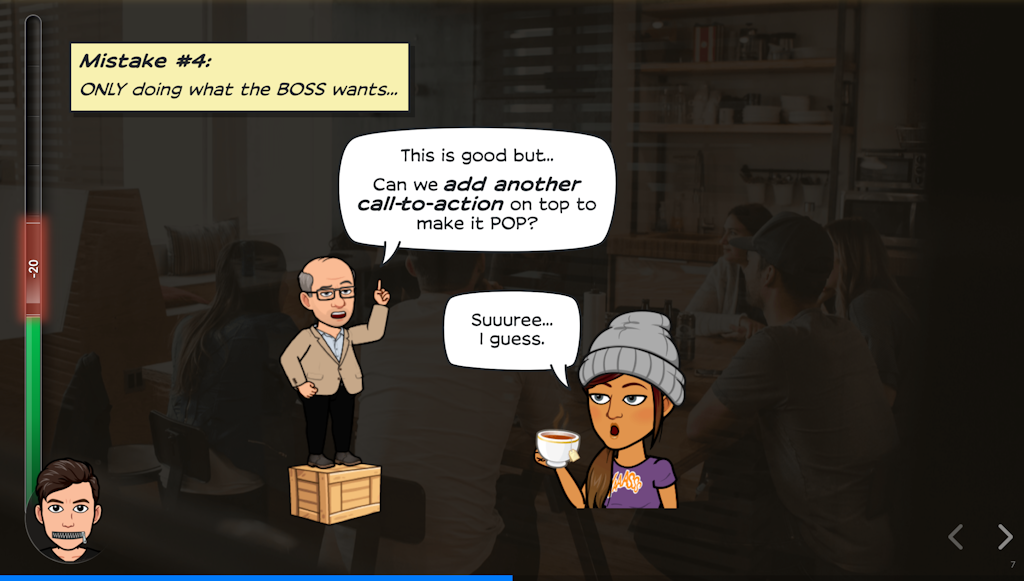 Screenshot taken from: https://growth.design/case-studies/product-team-pitfalls/
Screenshot taken from: https://growth.design/case-studies/product-team-pitfalls/
Conclusion
Engaging users is by no means an easy task, but the rewards are well worth it. Product stickiness is a complex entanglement of factors that revolve around ease-of-use and value. The great part about it is that even the most minute tweaks can have a massive effect on your product’s retention and user satisfaction.
If you need help with making your product stickier, you can always find us at Adam Fard UX Studio.